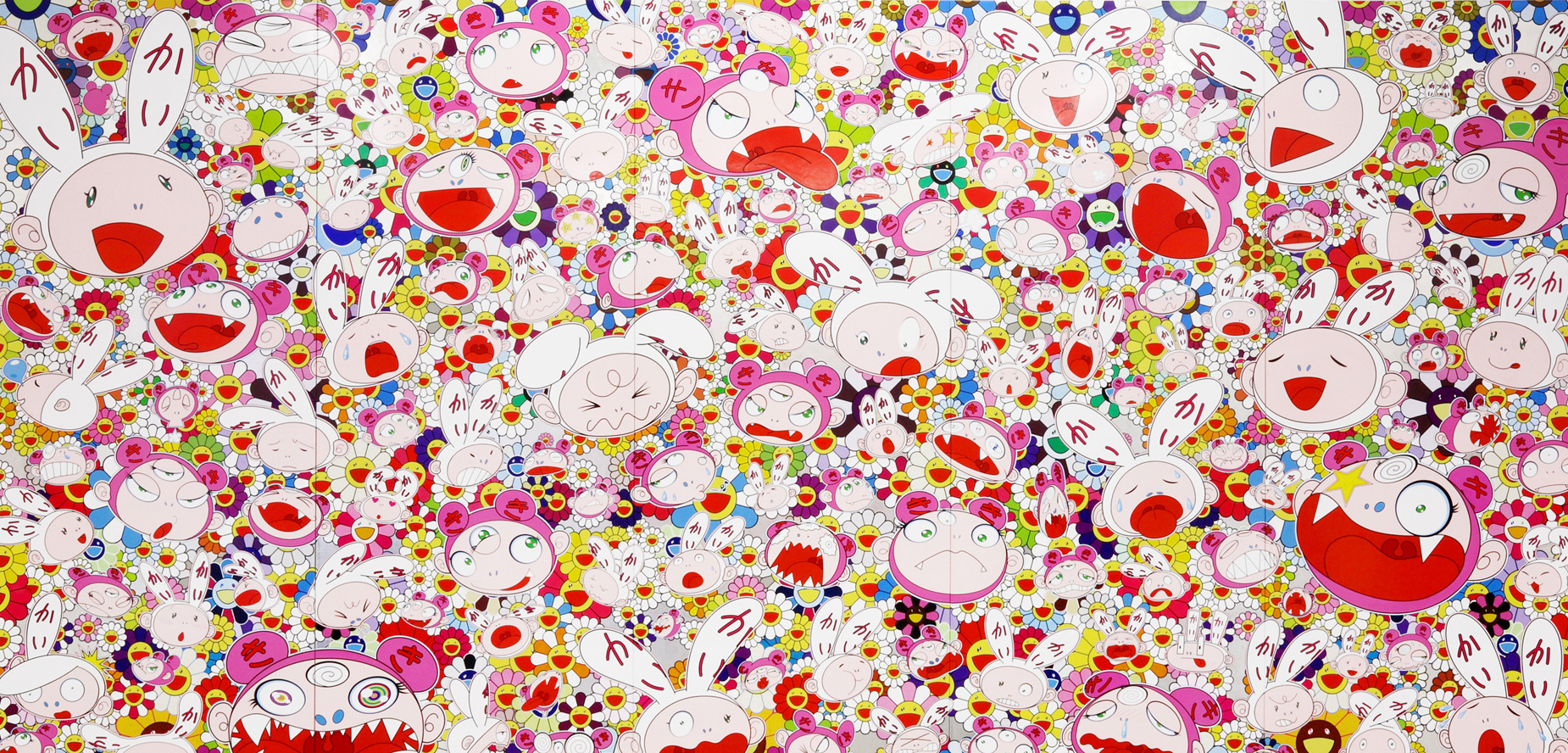Last weekend, when I finally set foot in The Broad, Los Angeles’ illustrious newish contemporary art museum founded by rich people Eli and Edythe Broad, I was greeted with the wondrous works of many of the usual modern masters: Warhol, Basquiat, Koons, Lichtenstein, Ruscha, Rauschenberg, and the mind-expanding like.
“According to The Broad’s website, ‘Murakami’s influence on Japan rivals Andy Warhol’s on the United States.’ But unlike Warhol, who’s gone but not forgotten, Murakami is still working, and at 55, seems to be only improving. His two jaw-dropping ‘superflat’ works on display front and center at The Broad were both done in the last ten years.”
This is by no means meant to demean the importance of those visionary artists, but by far the most impressive paintings on display at the wholly impressive space were by an artist I’d never really spent too much time with, Takashi Murakami.
Apparently though, I’m the only one who’s new to Murakami’s fine pop art stylings, as his recent show at Chicago’s Museum of Contemporary Art, Takashi Murakami: The Octopus Eats Its Own Leg, just logged 193,000 some-odd visitors, making it the most well attended exhibition in the Museum’s 50-year history. And the two massive, vibrant paintings currently on display at The Broad certainly showed me exactly why he’s so popular.
Pop would be a good place to start, too, as Murakami’s creations very obviously elicit a Japanese pop culture influence, particularly anime, manga, toys, and video games. Indeed, according to The Broad’s website, “Murakami’s influence on Japan rivals Andy Warhol’s on the United States.” Unlike Warhol, who’s gone but not forgotten, Murakami is still working, and at 55, seems to be only improving. His two jaw-dropping “superflat” works on display front and center at The Broad were both done in the last ten years. (Superflat refers to the post-modern art movement that Murakami created, which refers to recognizable flattened forms pervasive in anime and manga, while also commenting on the shallowness of Japanese consumer culture.)
One of The Broad’s current Murakami hangings is the first painting you see when you go up the museum’s futuristic escalator, which empties into a huge, white, open space, with Murakami’s 82-foot, acrylic on canvas, “In the Land of the Dead, Stepping on the Tail of a Rainbow” filling up two entire walls. The showstopper is Murakami’s cartoonishly metaphorical reaction to the 2011 Tōhoku earthquake and tsunami, set inside the historical context of Japan’s history of natural disasters. It’s also informed by artist Kano Kazunobu’s 150-year-old scrolls, created in response to the 1855 Ansei Edo earthquake, and populated with 500 arhats, Buddhist stewards who have attained nirvana. It took me a full half hour of awe-inspired introspection to get from one end to the other.
I next dropped a good amount of time at Murakami’s much smaller, but by no means small, 118 1/8 x 239 3/8 x 2 in. acrylic and platinum leaf on canvas mounted on aluminum frame, “Hustle ‘n’ Punch By KaiKai and Kiki.” As you can see in the pic above, there are a thousand flowers and faces, with a million eyes staring at you, and each eye is a circle within a circle within a circle. It would take me years to paint so many circles, and all mine would be wildly more incongruous then Murakami’s perfect, bold lines. What does it all mean? Why so much shock, and revulsion within the seemingly springy and ebullient confines?
Who knows? Maybe Murakami? Maybe me, deep within, on a subconscious level. Maybe you. That’s the beauty of art, particularly Murakami’s: an inviting, bold, magnetic passage, that compels you to get lost within his metaphysical and physical gift, a human connection to a heavenly world.


